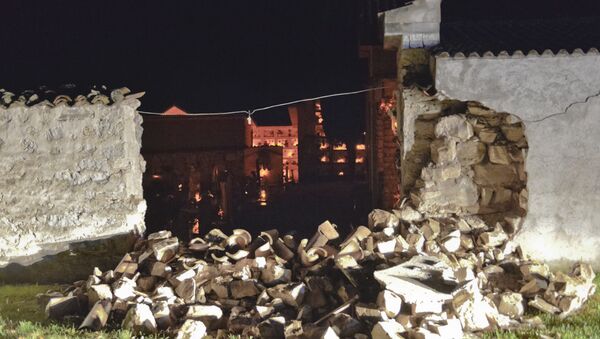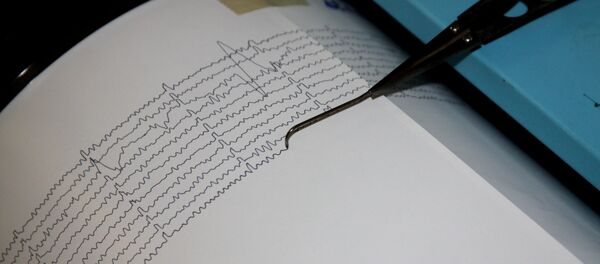"We’ve got 2,000-3,000 displaced people, and I fear many homes registered after the earthquake of August 24 are uninhabitable now," Spuri told journalists.
According to Spuri, the authorities should urgently make a decision on the fate of people who lost their houses as temporarily accommodating them in tent camps is impossible because of the coming winter.
Damages of the #earthquake in #Italy #ussita #visso
— Francesca Giannì (@FrancescalGin) 26 октября 2016 г.
Waiting and praying. pic.twitter.com/TP5HGGpiKt
The first earthquake with magnitude 5.4 on the Richter scale and epicenter in the province of Macerata (Marche region) shook central Italy on Wednesday at around 7 p.m. local time. Two hours later a more intense and lasting tremor hit, registering magnitude 5.9. The final quake was recorded at 11:42 p.m. with magnitude 4.6. According to the National Institute of Geophysics and Volcanology, two more earthquakes with magnitude 4.1 and 4.4 were recorded on Thursday at about 3 a.m. and 4 a.m.
Series of strong quakes cause panic in #Italy https://t.co/u5y4bUED71 #earthquake pic.twitter.com/PYGE1zH3oP
— dwnews (@dwnews) 27 октября 2016 г.
The Italian government allotted 40 million euros (approximately $43 million dollars) to deal with the emergency issues in the aftermath of the earthquakes that wreaked havoc in Italy the day before, media reported Thursday.
The hardest hit cities and towns include Visso, Ussita, Castelsantangelo sul Nera, Muccia, Pieve Torina, San Gines, Camerino and Caldarola, where hundreds of houses were destroyed, dozens of people hospitalized for shock or injuries.
Currently there is no data on seriously injured or killed people, apart from a 73-year-old man who died from a heart attack after the first quake struck.
Earlier this year, on August 24, a 6.0-magnitude quake shook central Italy, causing damage across the regions of Umbria, Lazio and Marche and resulting in the deaths of over 290 people. The earthquake was followed by multiple aftershocks.



